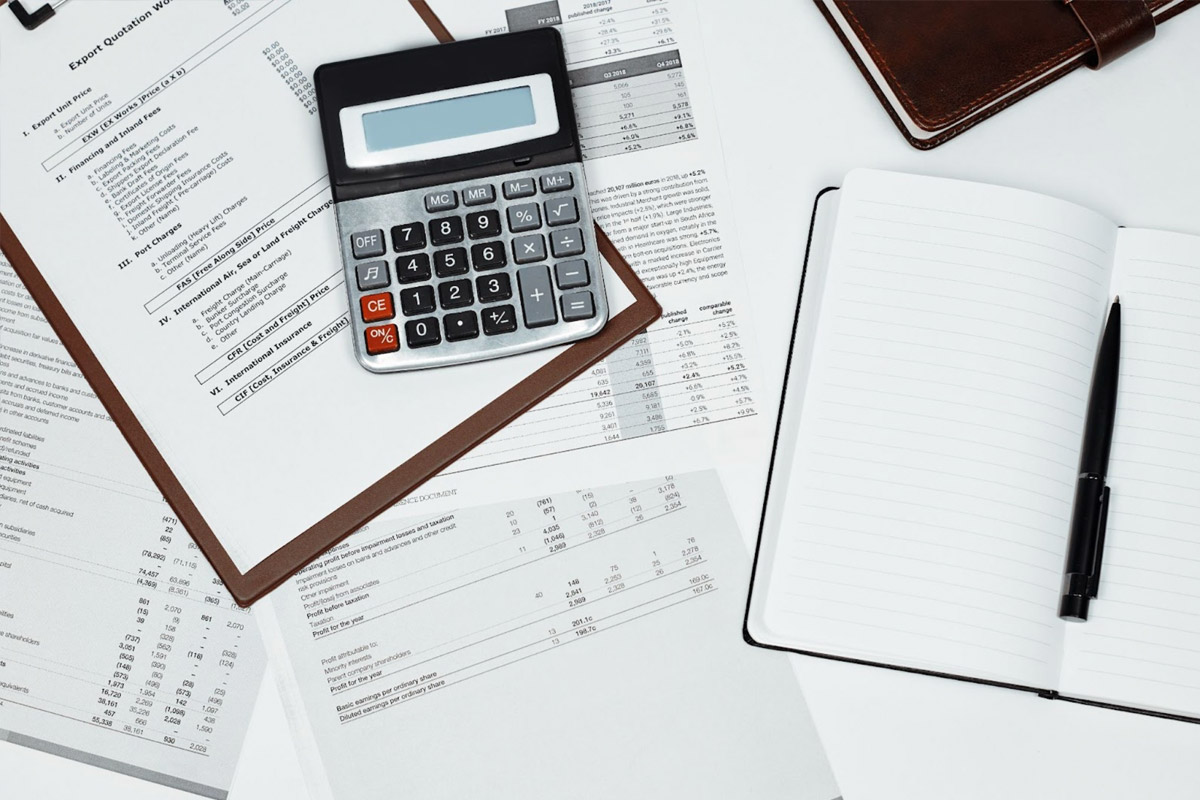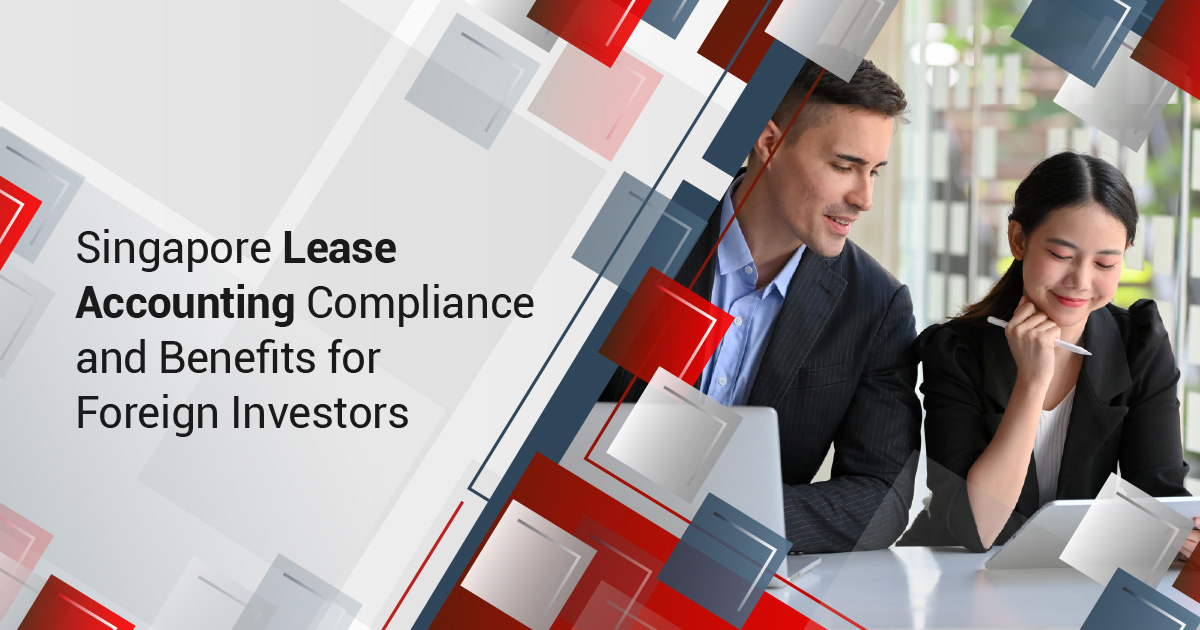Singapore continues to be a premier destination for foreign investment, with Foreign Direct Investment (FDI) at S$55.12 billion in the second quarter of 2025 and maintaining its position as the third-largest receiver of foreign direct investments worldwide. For international businesses establishing operations in Singapore, understanding lease accounting requirements is crucial for regulatory compliance and strategic decision-making.
Key Takeaways
- Singapore’s lease accounting standards, SFRS(I) 16 and FRS 116, align with international IFRS 16, requiring most leases to be recognised on the balance sheet for enhanced transparency.
- Foreign investors must capitalise right-of-use assets and lease liabilities, impacting financial statements, tax reporting, and financial ratios in Singapore.
- Short-term leases (12 months or less) and low-value assets are exempt from balance sheet recognition, easing compliance burdens.
- Tax deductions for leases remain on a cash basis, creating timing differences and deferred tax considerations for foreign companies.
- Singapore offers a competitive tax environment with a 17% corporate income tax rate, start-up tax exemptions, and extensive double taxation treaties.
- Compliance with ACRA’s annual filing requirements, including proper lease identification and disclosure, is essential for foreign companies.
- Lease accounting improves financial transparency, stakeholder confidence, and comparability for international investors.
- Different industry sectors, including manufacturing, finance, and technology, face distinct lease accounting considerations under the new standards.
- Successful implementation requires robust lease tracking systems, professional expertise, and ongoing compliance management.
- Singapore’s strong economic growth and investor-friendly policies make it a strategic choice for foreign investors mindful of lease accounting requirements.
Understanding Lease Accounting Standards in Singapore
Singapore’s lease accounting standards have undergone significant changes to align with international best practices. The introduction of SFRS(I) 16 and FRS 116 has transformed how leases are reported, requiring lessees to recognise most leases on the balance sheet. This shift improves transparency and affects key financial statements and metrics.
Current Regulatory Framework
Singapore has fully aligned its lease accounting standards with international practices through the implementation of Singapore Financial Reporting Standards (International) 16 [SFRS(I) 16] and Financial Reporting Standards 116 (FRS 116). These standards, which became effective from January 1, 2019, replaced the previous FRS 17 and are equivalent to the International Financial Reporting Standards (IFRS) 16.
The key objective of these standards is to ensure that lessees recognise assets and liabilities for their major leases, providing enhanced transparency and improved comparability between companies that lease versus those that purchase assets.
Related Read: Singapore Financial Reporting Guidelines: Requirements, Benefits & Implementation Guide
Key Changes From Previous Standards
Under the previous accounting framework (FRS 17), operating leases were treated as “off-balance sheet” transactions, meaning companies only recorded lease payments as operating expenses without recognising corresponding assets or liabilities. The new standards fundamentally changed this approach by requiring almost all leases to be recognised on the balance sheet. This transformation affects how businesses present their financial position, with significant implications for:
- Balance sheet presentation with new right-of-use assets and lease liabilities
- Income statement classification separating depreciation and interest expenses
- Cash flow statement reclassifying operating lease payments
- Financial ratios potentially impacting debt ratios, leverage metrics, and loan covenant compliance
Right-of-Use Asset and Lease Liability Recognition
When a lease contract begins, lessees must recognise a right-of-use asset and a corresponding lease liability on the balance sheet. The liability is measured at the present value of future lease payments, while the asset includes costs such as initial payments and restoration obligations. This accounting treatment results in amortisation of the liability and depreciation of the asset over the lease term, reflecting the time value of money.
Initial Measurement Requirements
At the commencement of a lease contract, lessees must capitalise a ‘right-of-use’ asset and recognise a corresponding lease liability on the balance sheet. The lease liability is initially measured at the present value of future lease payments that are not paid at the commencement date.
The discount rate used for present value calculations should ideally be the rate of interest implicit in the lease. When this rate cannot be readily determined, lessees may use their incremental borrowing rate.
Right-of-Use Asset Components
The right-of-use asset includes several components:
- Initial measurement of the lease liability
- Payments made at or before the commencement date, less any lease incentives received
- Initial direct costs incurred by the lessee
- Estimated costs for dismantling, removing, or restoring the underlying asset
Subsequent Measurement and Accounting Treatment
Following initial recognition, the lease liability is amortised over the lease term as payments are made, while the right-of-use asset is depreciated over its useful life. This creates a front-loaded expense pattern where interest expense is higher in earlier years and gradually decreases over time, reflecting the time value of money.
Exemptions and Practical Relief
To ease the compliance burden, Singapore’s lease accounting standards offer exemptions for short-term leases lasting 12 months or less and for leases involving low-value assets like office equipment. These practical relief options allow companies to expense such leases without recognising them on the balance sheet, simplifying accounting for smaller or temporary arrangements.
Related Read: What are Corporate Tax Exemptions in Singapore?
Short-Term Lease Exemption
SFRS(I) 16 and FRS 116 provide practical relief for short-term leases with terms of 12 months or less without purchase options. Companies can elect to expense these leases as incurred without balance sheet recognition, similar to the previous operating lease treatment.
Low-Value Asset Exemption
Leases of low-value assets can also be exempted from balance sheet recognition. This exemption typically applies to assets such as printers, laptops, and other office equipment with relatively minimal individual value.
These exemptions are expected to significantly reduce the implementation burden for businesses that primarily lease low-value or short-term assets.
Implementation Considerations for Foreign Investors

Foreign companies operating in Singapore must understand the tax and compliance implications of lease accounting. While lease expenses are recognised as depreciation and interest for accounting purposes, tax deductions are based on actual lease payments, creating timing differences. Compliance includes accurate lease classification, measurement, disclosure, and meeting annual filing requirements with Singapore’s regulatory authorities.
Tax Implications in Singapore
For foreign companies establishing operations in Singapore, understanding the tax treatment of lease arrangements is crucial. Under the new lease accounting standards, lessees record right-of-use assets and corresponding lease liabilities on the balance sheet, with lease expenses reflected as depreciation and interest expenses in the profit and loss statement.
However, for income tax computation purposes, tax deductions continue on a cash basis as lease payments are made. This creates timing differences between accounting and tax profits, requiring entities to consider deferred tax implications.
Singapore offers attractive tax incentives for foreign investors, including:
- Corporate income tax rate capped at 17% – among the lowest in Asia
- Start-up tax exemption schemes providing relief on the first S$100,000-200,000 of taxable income
- Foreign-sourced income exemption under qualifying conditions
- Around 100 double taxation avoidance agreements prevent companies from being taxed twice
Compliance Requirements for Foreign Companies
Foreign companies operating in Singapore must comply with specific annual filing requirements with the Accounting and Corporate Regulatory Authority (ACRA). This includes lodging audited financial statements for both the head office and Singapore branch operations.
For lease accounting compliance, foreign investors should ensure:
- Proper lease identification and classification at contract inception
- Accurate measurement of right-of-use assets and lease liabilities
- Appropriate disclosure of lease-related information in financial statements
- System capabilities to track and account for lease modifications and remeasurements
Strategic Benefits for Foreign Investors
The adoption of SFRS(I) 16 enhances financial transparency by requiring leases to be recorded on the balance sheet, giving stakeholders clearer insight into a company’s financial obligations. This transparency benefits international investors, lenders, regulators, and business partners by providing consistent and reliable financial information.
Enhanced Financial Transparency
The adoption of SFRS(I) 16 has led to greater transparency by requiring most leases to be recorded on the balance sheet. This provides stakeholders with a clearer view of a company’s financial obligations and assets, which is particularly valuable for:
- International investors seeking consistent financial reporting across jurisdictions
- Lenders and creditors evaluating creditworthiness and financial position
- Regulatory authorities monitoring compliance with financial regulations
- Business partners assessing operational stability and commitment
Global Standards Alignment
Singapore’s adoption of SFRS(I) 16 aligns with IFRS 16, ensuring that lease accounting practices are consistent with global standards. This alignment facilitates:
- Better comparability for international investors analysing multiple jurisdictions
- Streamlined consolidation processes for multinational corporations
- Reduced compliance complexity for companies operating across IFRS-adopting countries
- Enhanced investor confidence through standardised reporting practices
Industry-Specific Considerations
Different sectors in Singapore face unique lease accounting challenges. The manufacturing sector, which contributes significantly to GDP, along with financial services, fintech, and a growing tech startup ecosystem, must address lease accounting for facilities, equipment, technology infrastructure, and flexible workspaces in line with the new standards.
Manufacturing and Industrial Sectors
Singapore’s manufacturing sector, which accounts for approximately 21.5% of GDP, saw a 4.3% expansion in 2024. Manufacturing companies typically have significant lease arrangements for production facilities, specialised equipment, and transportation assets. The new lease accounting standards particularly impact manufacturers with long-term facility leases and high-value equipment arrangements.
Financial Services and Fintech
As a major financial hub, Singapore hosts numerous financial services companies that rely heavily on prime office space, technology infrastructure, and branch networks. The fintech sector, which has seen the fastest growth in recent years, must carefully consider lease accounting for rapidly scaling operations and technology investments.
Related Read: Why Setup Fintech Companies in Singapore
Technology and Startup Ecosystem
With over 4,500 startups in Singapore and equity funding reaching S$2.08 billion as of Q3 2023, the technology sector presents unique lease accounting considerations for flexible workspace arrangements, cloud infrastructure, and research facilities.
Best Practices for Implementation

Effective lease accounting requires robust systems, thorough lease inventories, internal controls, and ongoing compliance management.
System and Process Requirements
Successful lease accounting implementation requires comprehensive lease inventory identification, robust data management systems, established internal controls, and professional expertise familiar with Singapore’s regulatory environment.
Ongoing Compliance Management
Foreign investors should establish ongoing processes for regular lease portfolio reviews, quarterly assessments of lease asset impairment, annual disclosure preparations meeting ACRA filing requirements, and coordination with tax advisors to optimise timing differences.
2025 Market Outlook and Regulatory Developments
Singapore’s strong economic growth, projected GDP expansion, and regulatory focus on disclosure, climate considerations, and technology integration highlight the importance of staying abreast of regulatory developments for successful investment and compliance in 2025.
Economic Environment
Singapore’s economy expanded by 4.4% in 2024, with the Ministry of Trade and Industry projecting GDP growth between 1% and 3% for 2025. Investment commitments garnered by the Economic Development Board (EDB) reached S$1.7 billion in the first quarter of 2025, with United States investors contributing 36.1% of total commitments.
Regulatory Focus Areas
Key focus areas for 2025 include enhanced disclosure requirements for lease-related risks, climate-related considerations in lease accounting, technology integration requirements for lease management systems, and cross-border compliance coordination for multinational lease arrangements.
How Can InCorp Help?
For foreign investors in Singapore, mastering lease accounting under SFRS(I) 16 and FRS 116 is key to compliance and business success. Singapore’s strong economy and favorable tax landscape make it an ideal investment hub. Contact InCorp to get expert advice in navigating accounting and setting up your business smoothly in Singapore.
FAQs about Lease Accounting in Singapore
How to account for a lease?
- Record a right-of-use asset and lease liability at lease commencement, then amortise the liability and depreciate the asset over the lease term.
What is the basis of lease accounting?
- Lease accounting requires recognising most leases on the balance sheet, reflecting both assets and liabilities for transparent financial reporting.
What is the IFRS standard for lease accounting?
- The IFRS standard for lease accounting is IFRS 16, which mandates lessees to recognise right-of-use assets and lease liabilities for most leases.


